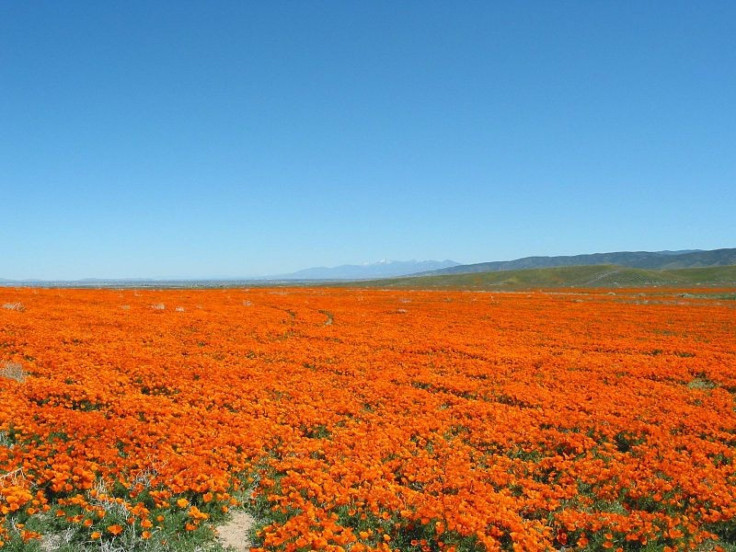America’s Best Springtime Drives

As the season changes, so does the scenery on the roads we travel. In the fall, it's the foliage of the leaves, while in the winter it's the cold bare branches of the empty trees. In the spring, it's the fresh vibrant colors that make our drives so scenic and remind us that warm weather is upon us.
Once those pinks, purples and greens break out from hibernation, Americans take to the road in search of spontaneous adventure that's accompanied by Mother Nature's fine craftsmanship and history's age old landmarks.
And while you might not know it, some of the USA's longest roads and routes offer some of nature's most visually stunning displays. From the Golden State to the Sunshine State, these roads are lined with gorgeous showings of flowers, mountains and lakes.
Following along the integrated highways that connect the States, here's a look at some of America's best spring drives.
George Washington Memorial Parkway
Boasting 591 wildflower displays from large-flowered valerians to Virginia Bluebells, the George Washington Memorial Parkway reveals one of the most well-known floral festivals in the United States. Running alongside the Tidal Basin in D.C., the memorial parkway passes by the same cherry trees that can be seen at the National Cherry Blossom Festival. The national event runs March 20 through April 27, 2012, marking the 100th anniversary of this eye-catching gift from Japan.
Antelope Valley Freeway
Take Route 14 (also known as the Antelope Valley Freeway) from Los Angeles and drive north. What you'll see is the Antelope Valley Poppy Reserve - home to 17,600 acres of Golden Poppies. The California state flower is accompanied on the reserve by a collection of fiddlenecks, creamcups, goldfields, and tidytips that start to bloom in late march. The reserve itself -- located 15 miles west of Lancaster -- is protected by the state of California and harbors the most consistent blooms of California poppies. The intense blooming season for the state flower falls in the late winter to early spring, during the months of mid-February through mid-May.
Louisiana Great River Road
Sugar plantations and regal plantation houses accent Louisiana's Great River Road as it winds from Baton Rouge through Creole Country to New Orleans. The 100-mile route traverses one of America's richest areas, pre-Civil War. Giant oak trees tower over the creole cottages that are surrounded by patches of budding wildflowers on the landmark-rich byways that run along the lower Mississippi River. Visitors can take advantage of open viewings of the homes and in some cases, stay overnight. Built by wealthy landowners of European descent, the antebellum homes and their elaborate gardens bring American history to life.
San Juan Skyway, Colorado
Spanning 232 miles, the San Juan Skyway bisects the Victorian-era towns of Ouray and Silverton. Called the Million Dollar Highway, the name refers to the abundance of silver and gold that was once carted away along the road. Starting in Durango, Co., the byway follows U.S. Highway 160 west through the town of Mancos to Cortez and passes the entrance to Mesa Verde National Park. Tourists can also roam the rugged Alpine Loop Back Country Byway which takes you past the 19th century ghost towns of Howardsville, Eureka, and Animas Forks.
Tamiami Trail, Florida
Before crossing the everglades and rolling in to Miami, the 275-mile Tamiami Trail lines Florida's tropical western coast with royal palms and rare species of orchids. Coasting along from Tampa though Sarasota, Fort Meyers and Naples, the trail is the southernmost 264 miles of U.S. Highway 41 from State road 60 in Tampa to U.S. Route 1 in Miami. While on the road, travelers can see Fakahatchee Strand Preserve State Park, also known as the Amazon of North America. The famous swampland area is featured in Susan Orlean's novel, The Orchid Thief.
Crowley's Ridge Parkway
The parkway that cuts through northeast Arkansas and extends up into Missouri is Crowley's Ridge Parkway. The area supports a number of North America's rare species from netted chain fern to black chokeberry. The parkway also provides a convenient detour for protected nature reserves like Ozark-St. Francis National Forests. Along the scenic route, travelers can see many properties that are a part of the National Register of Historic Places. Civil War battlefields, parks, and other archaeological and culturally significant points are among the highlighted stops that make this parkway stand out.
© Copyright IBTimes 2024. All rights reserved.






















